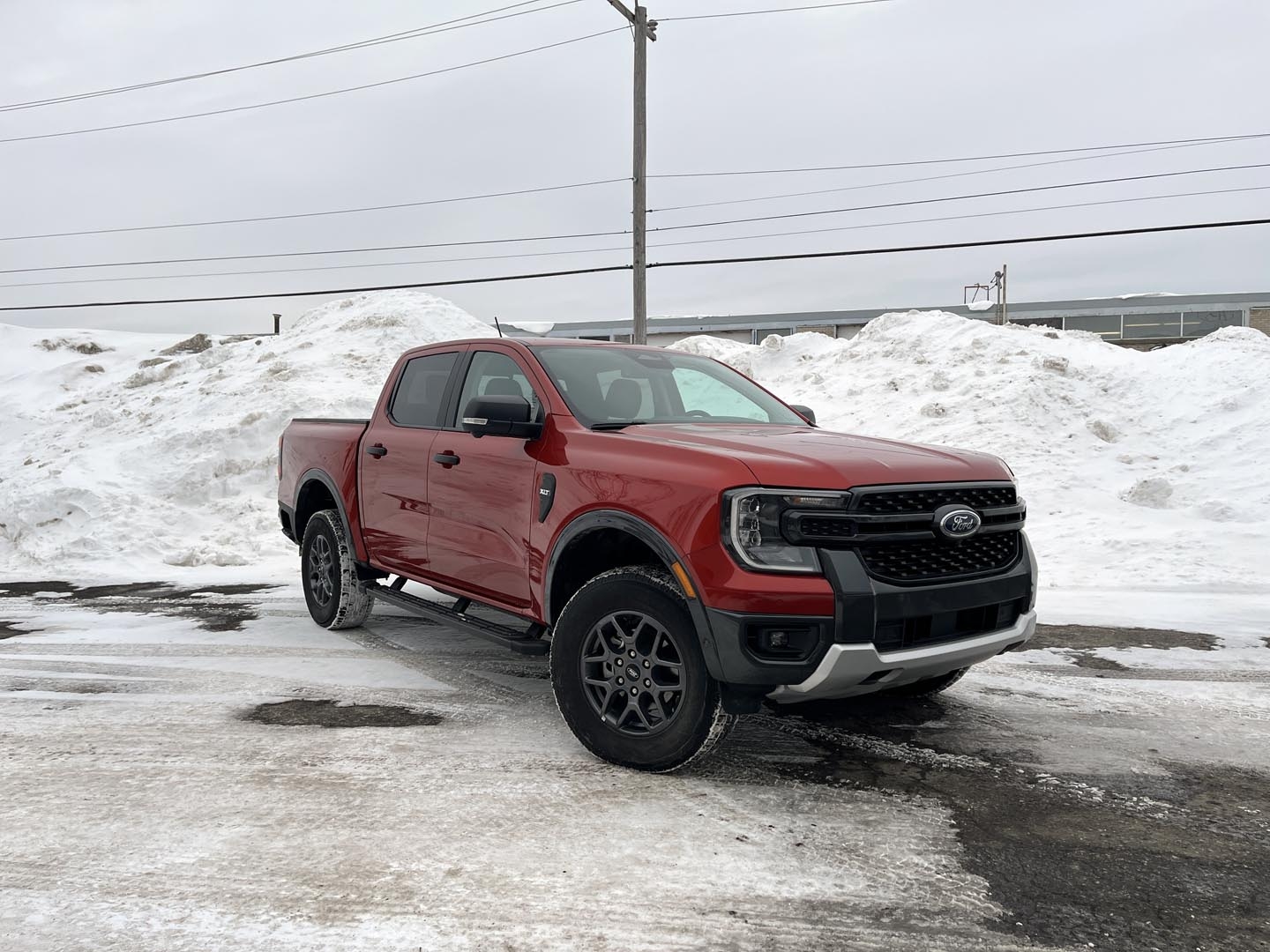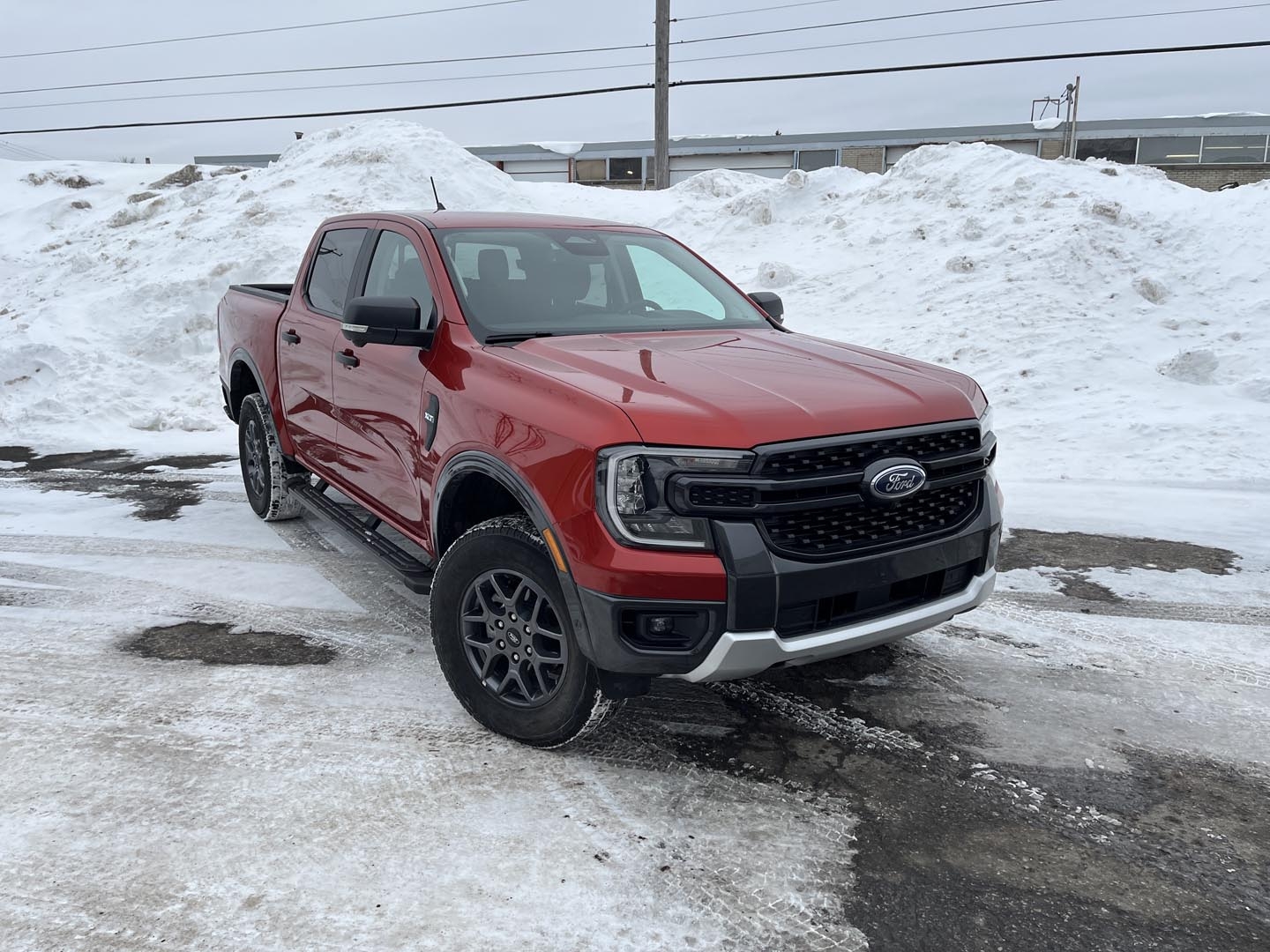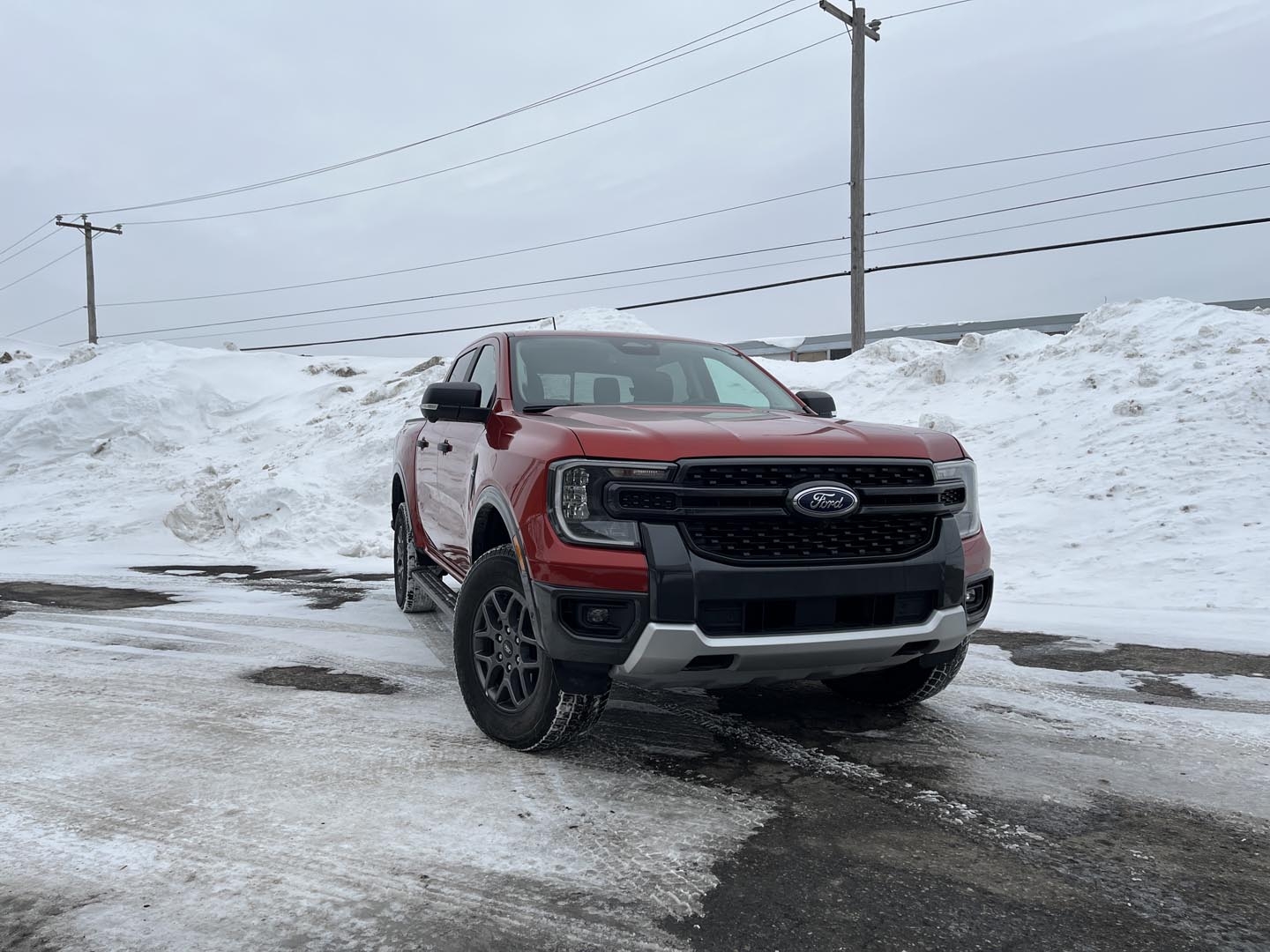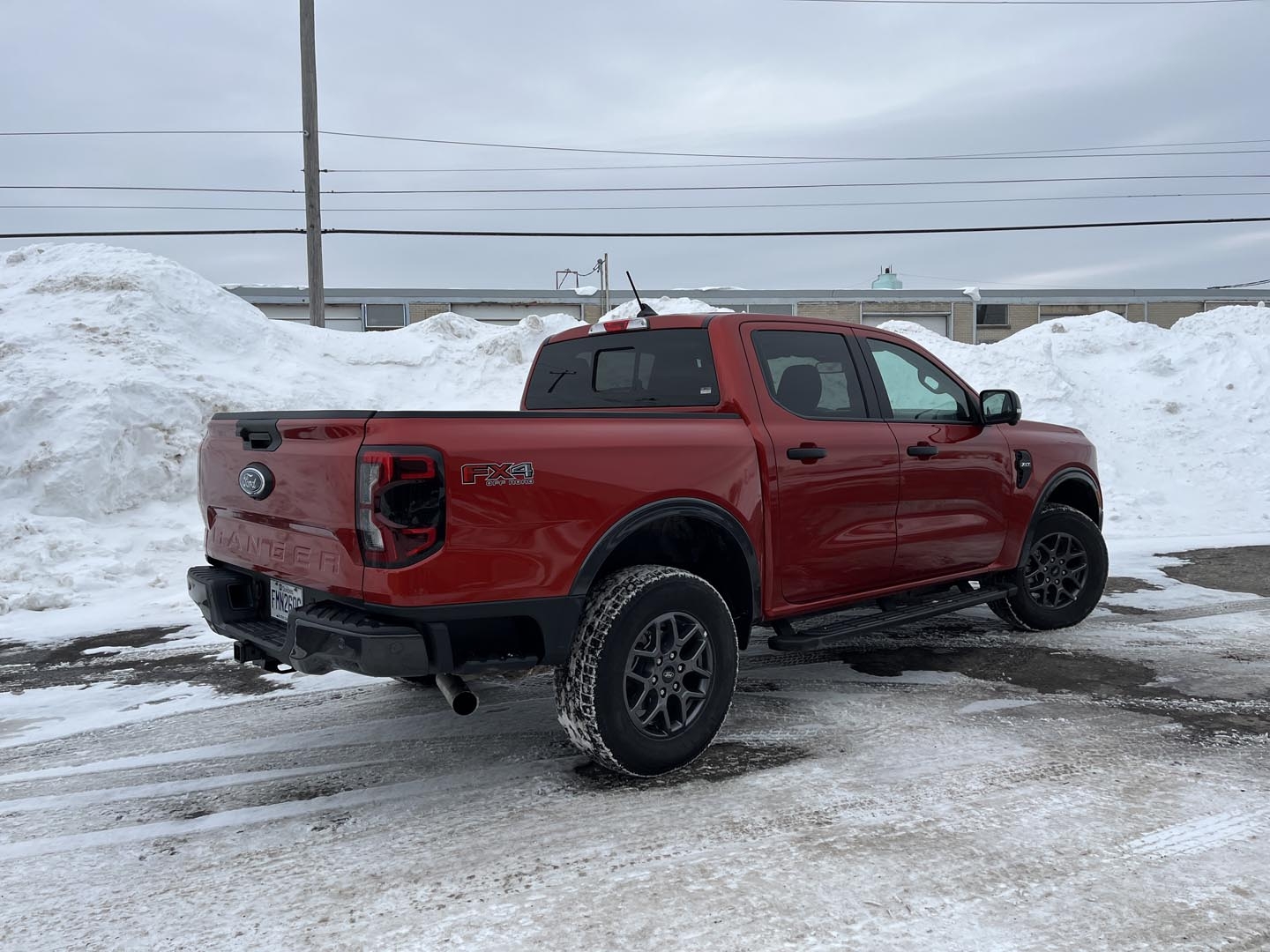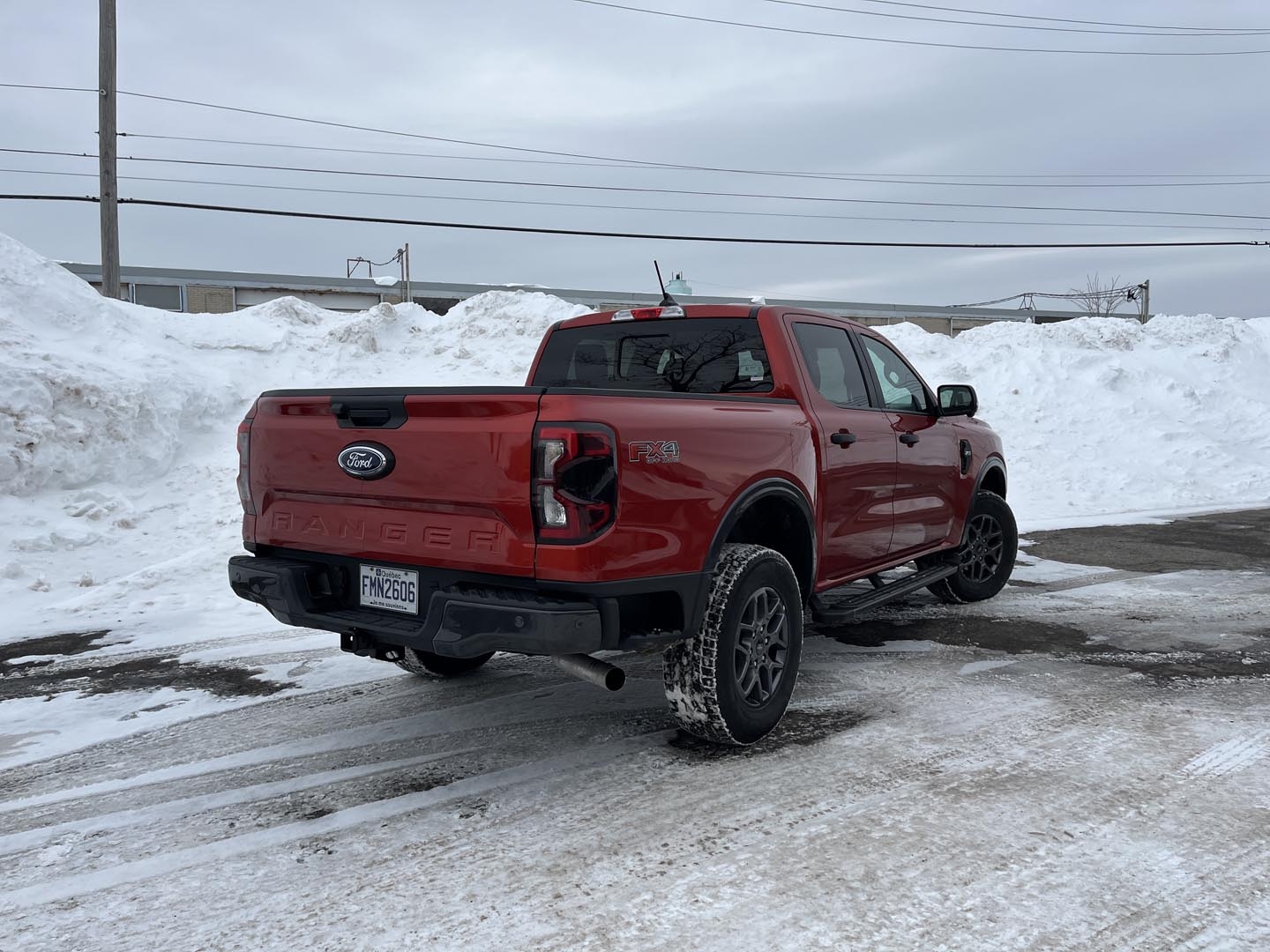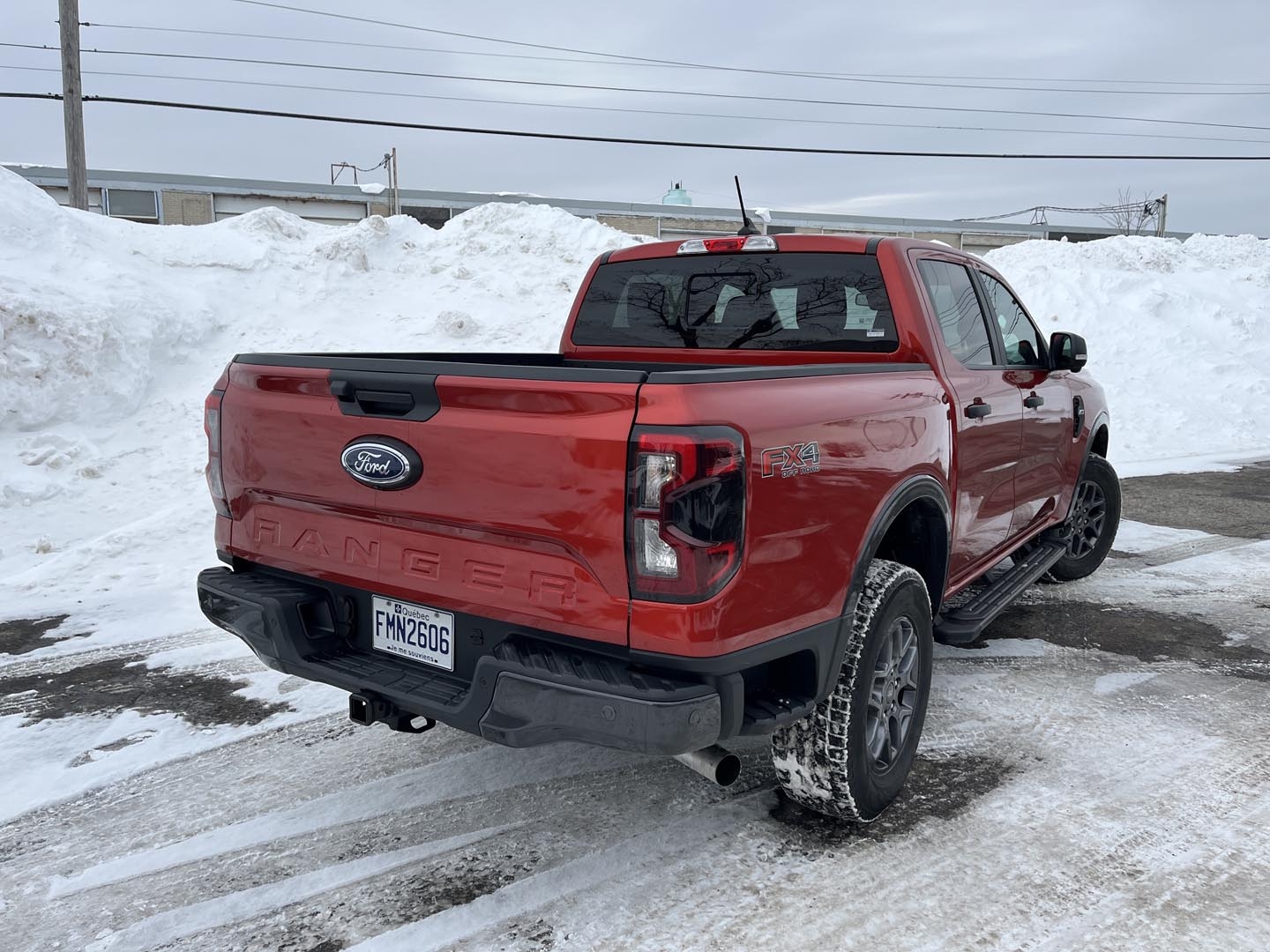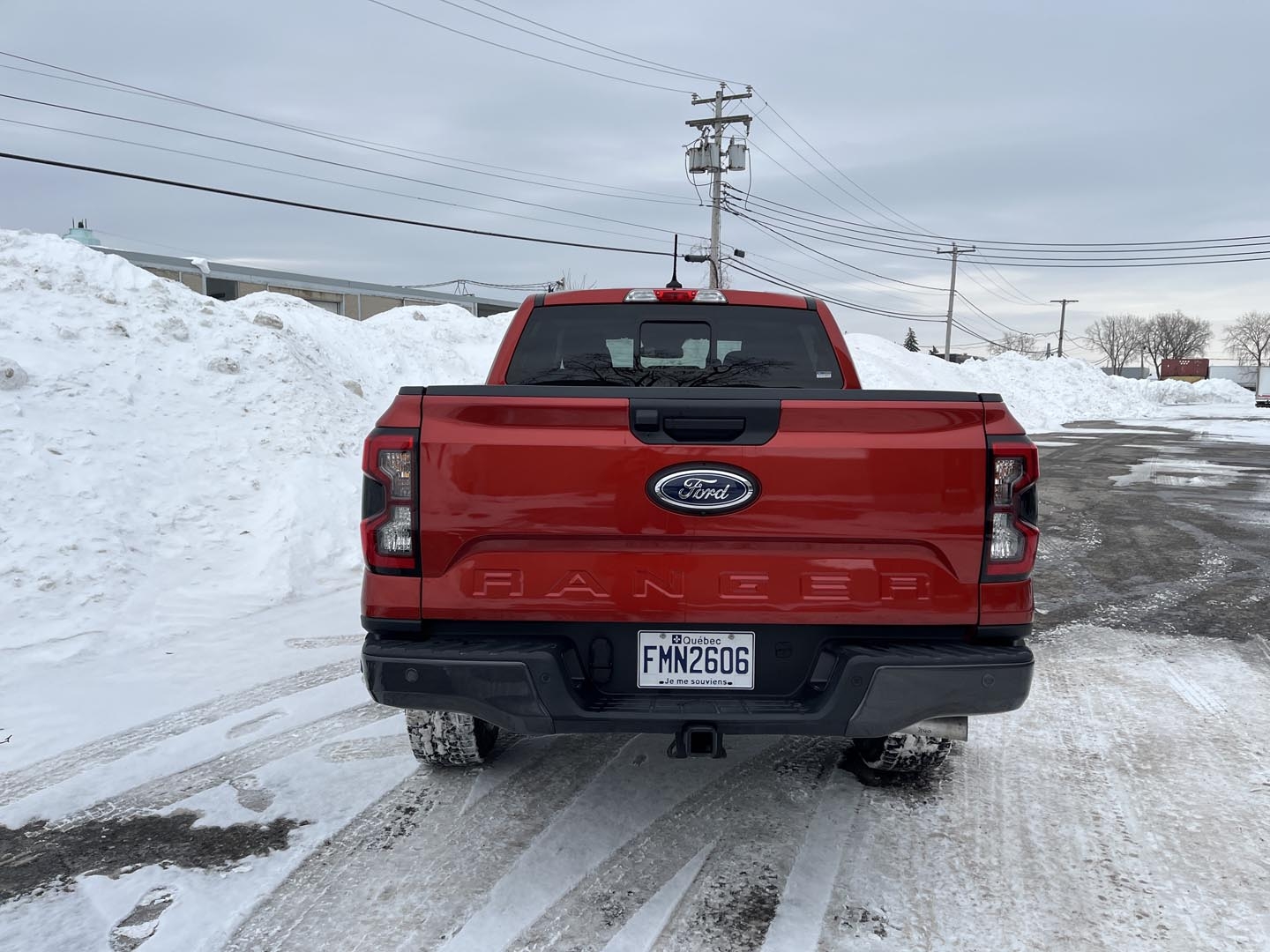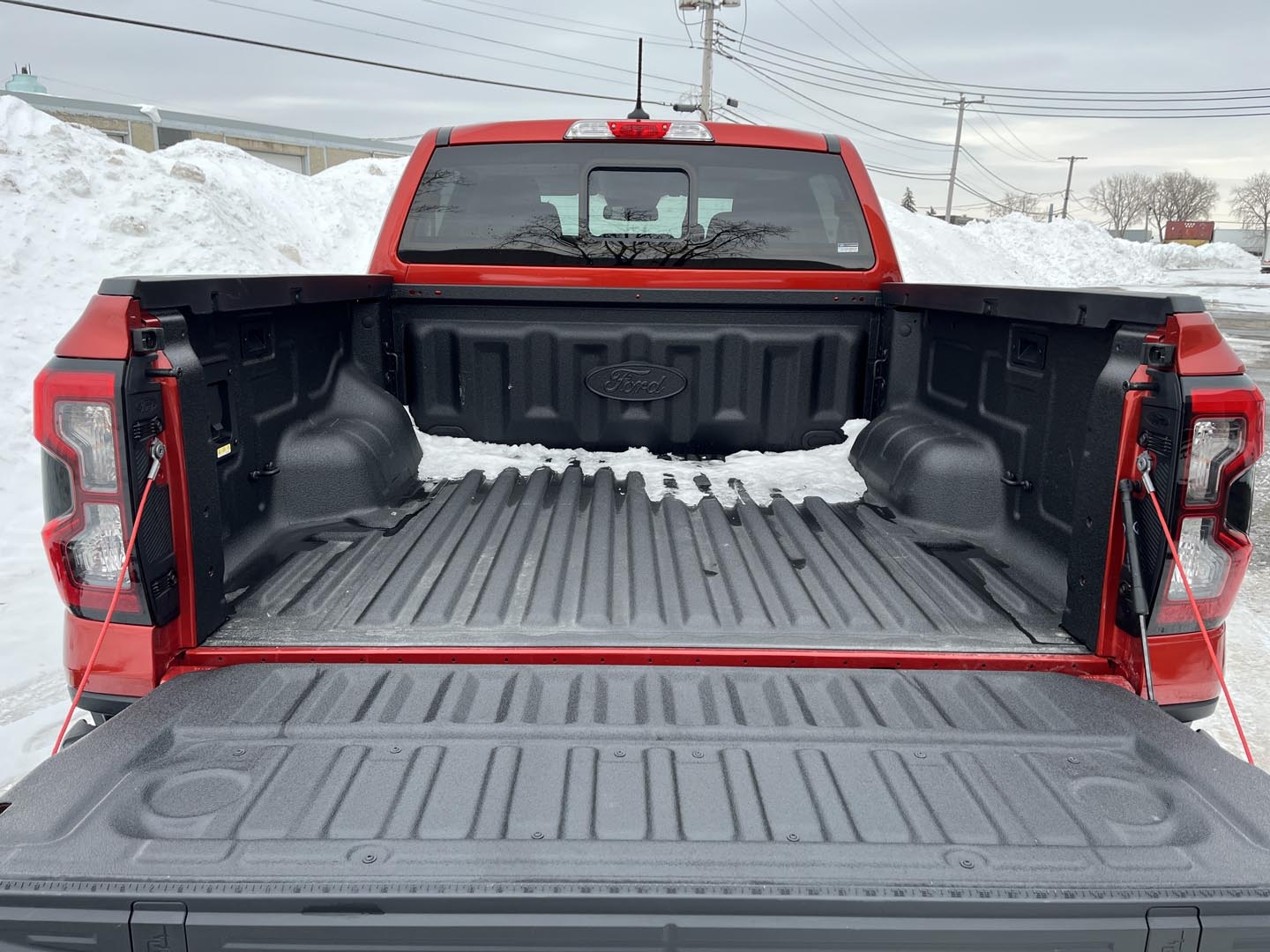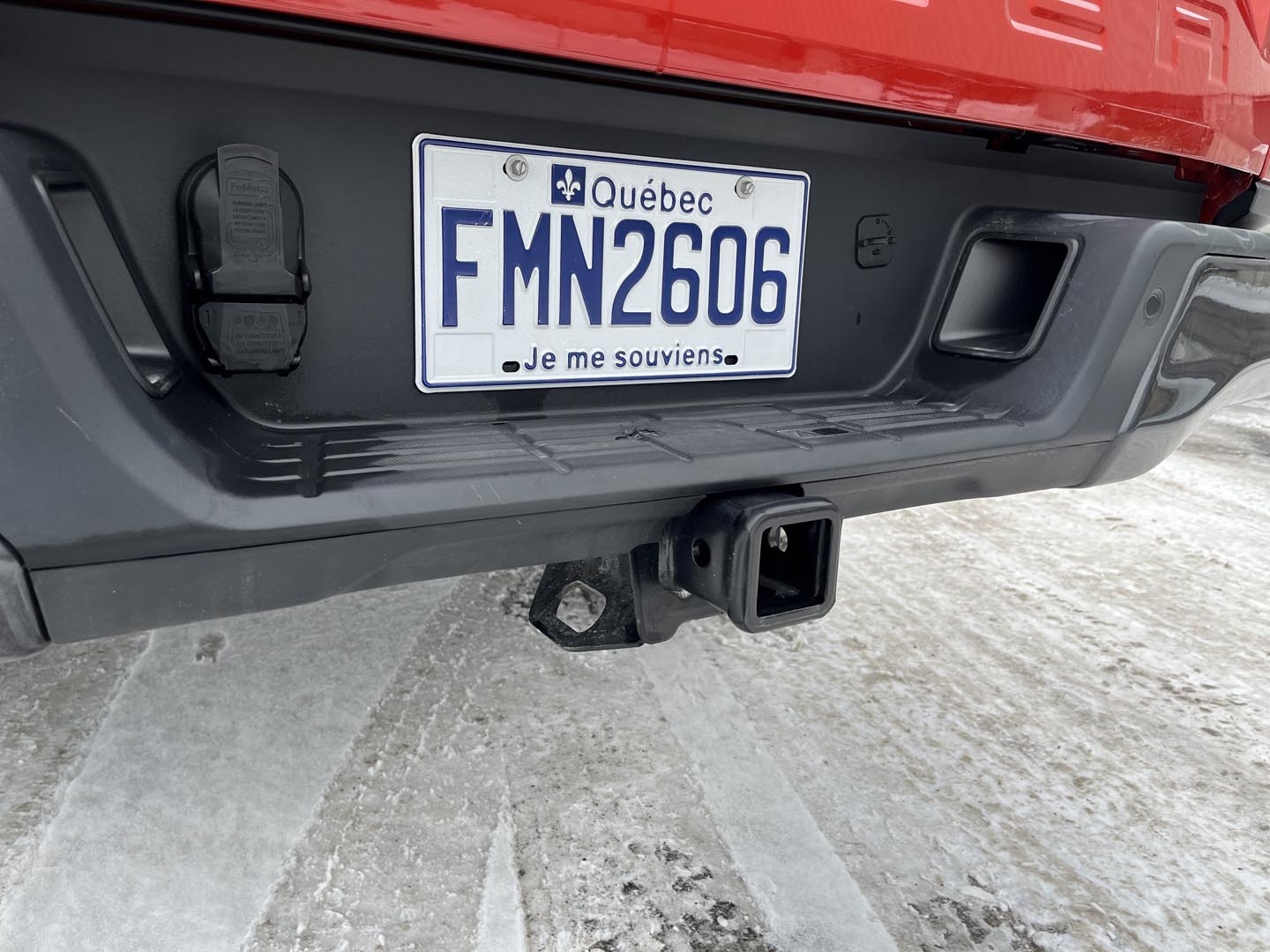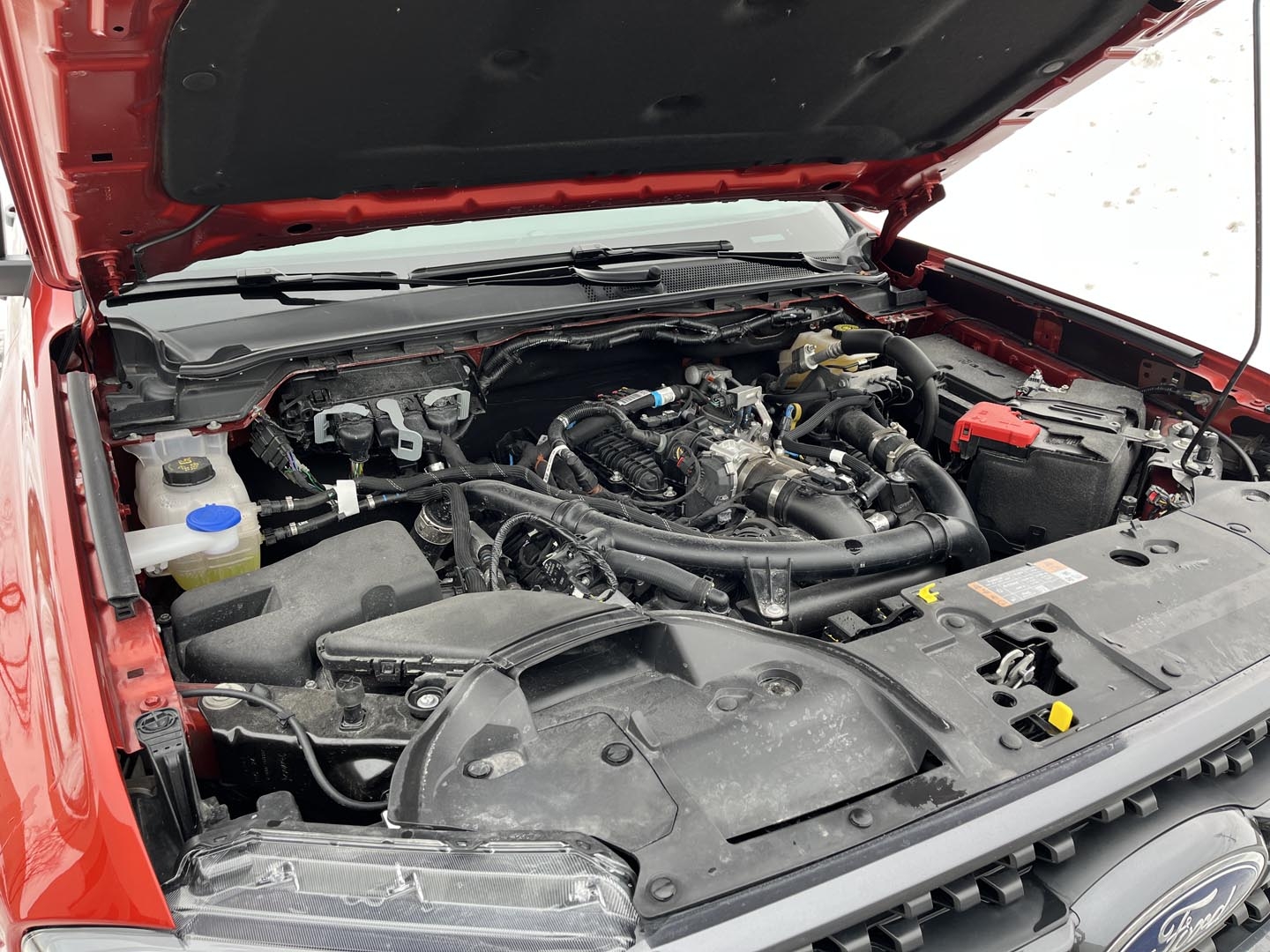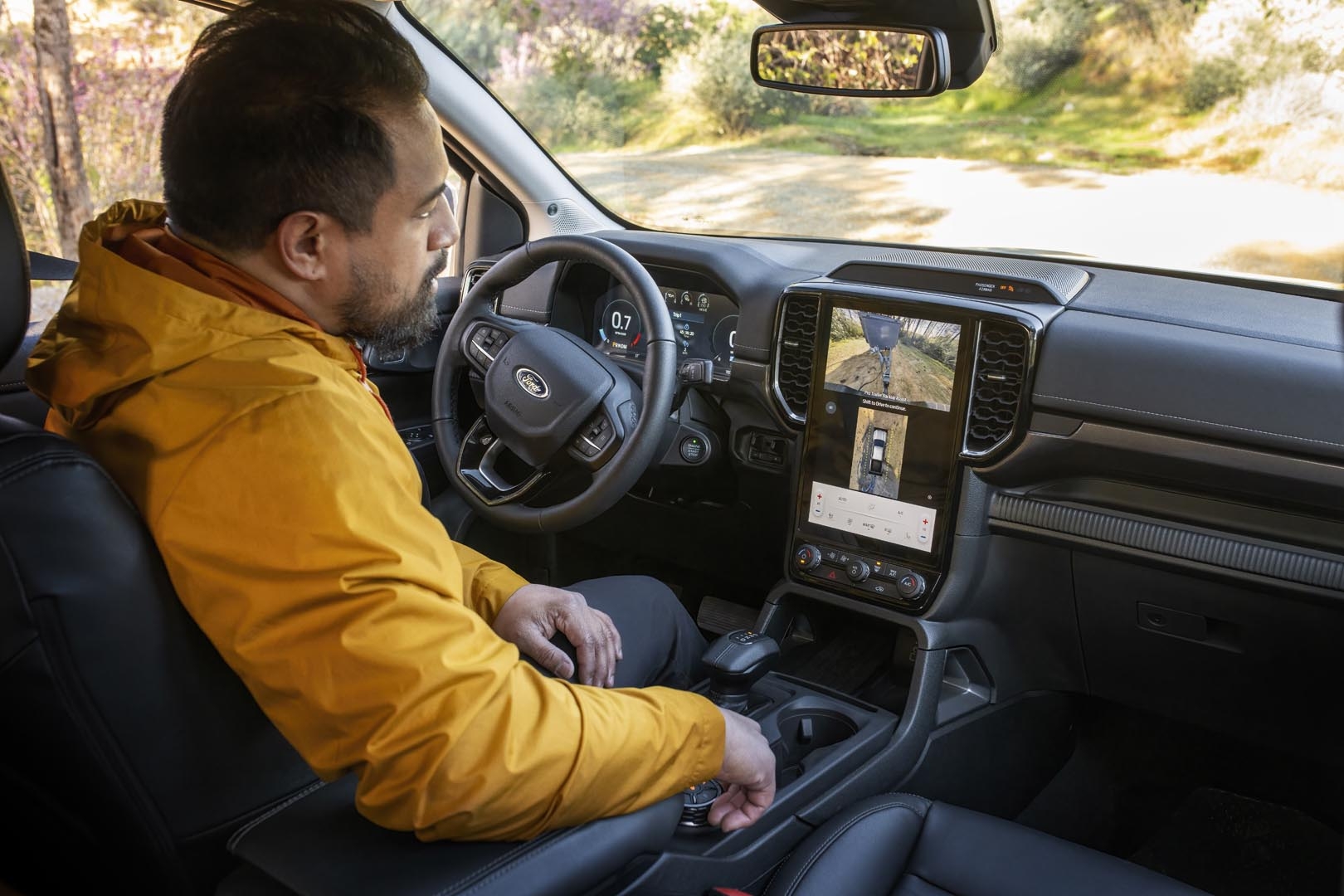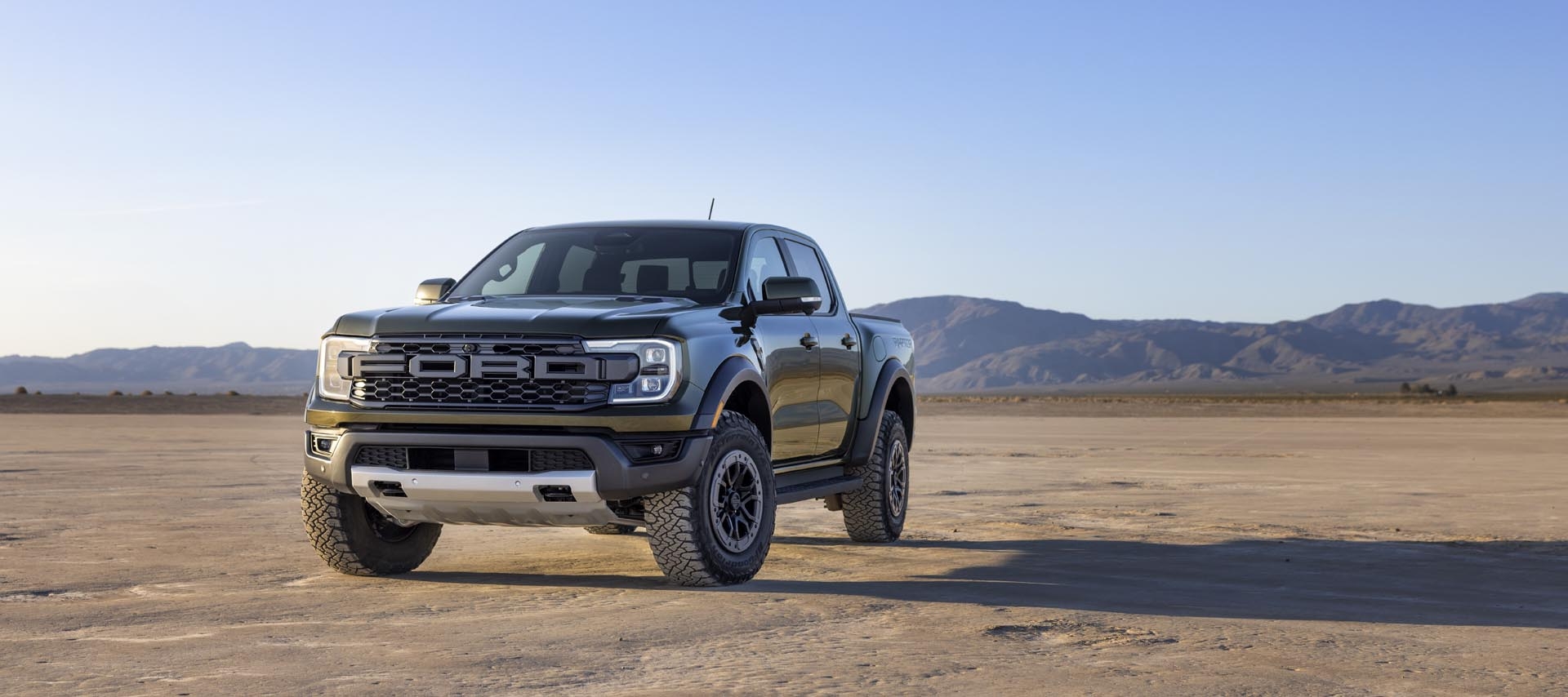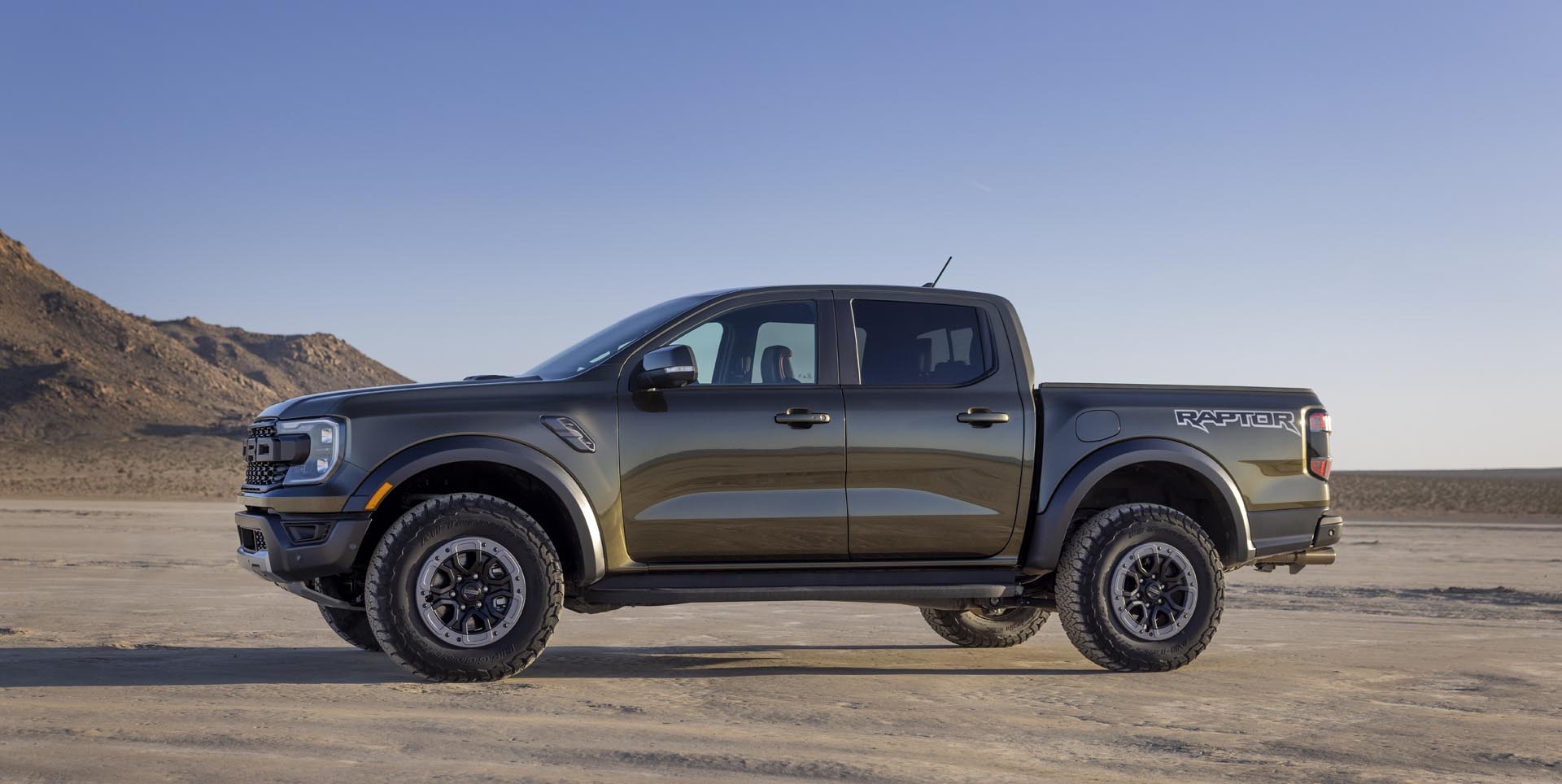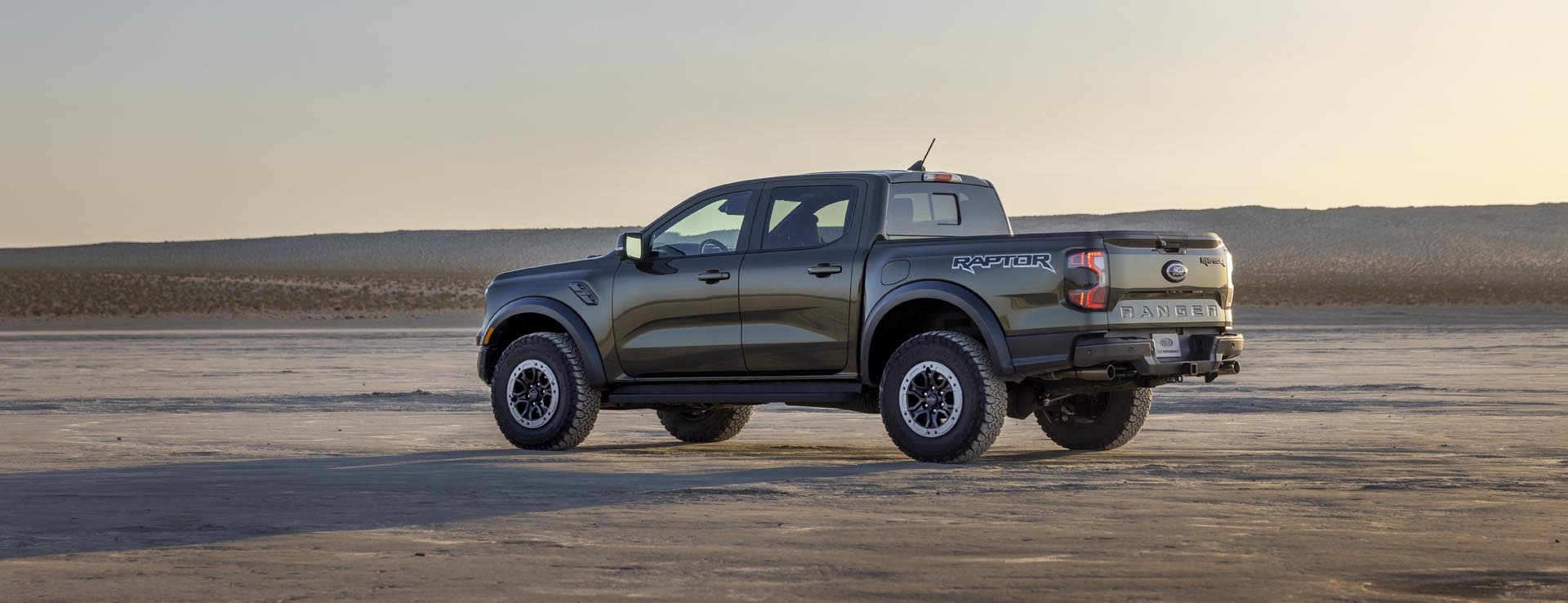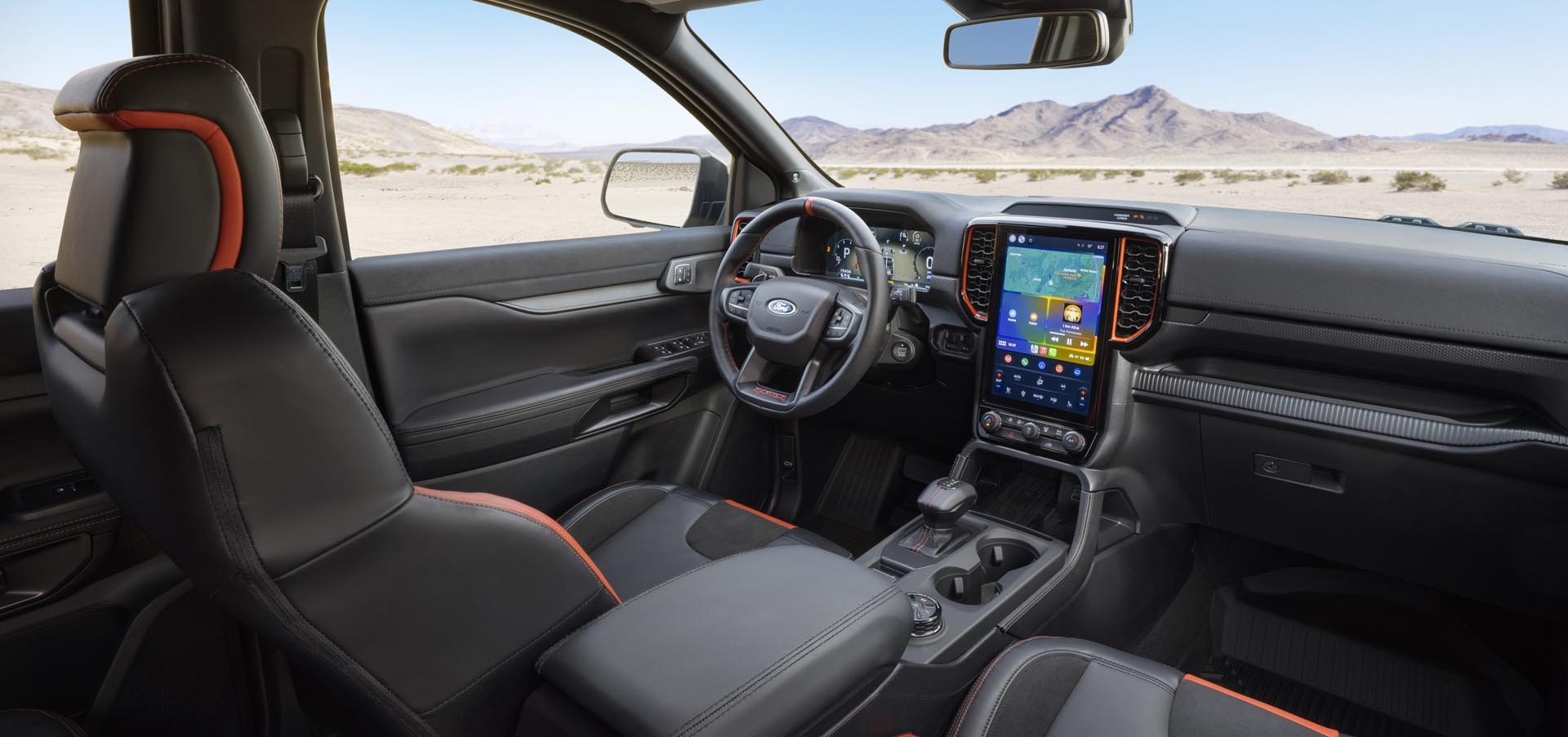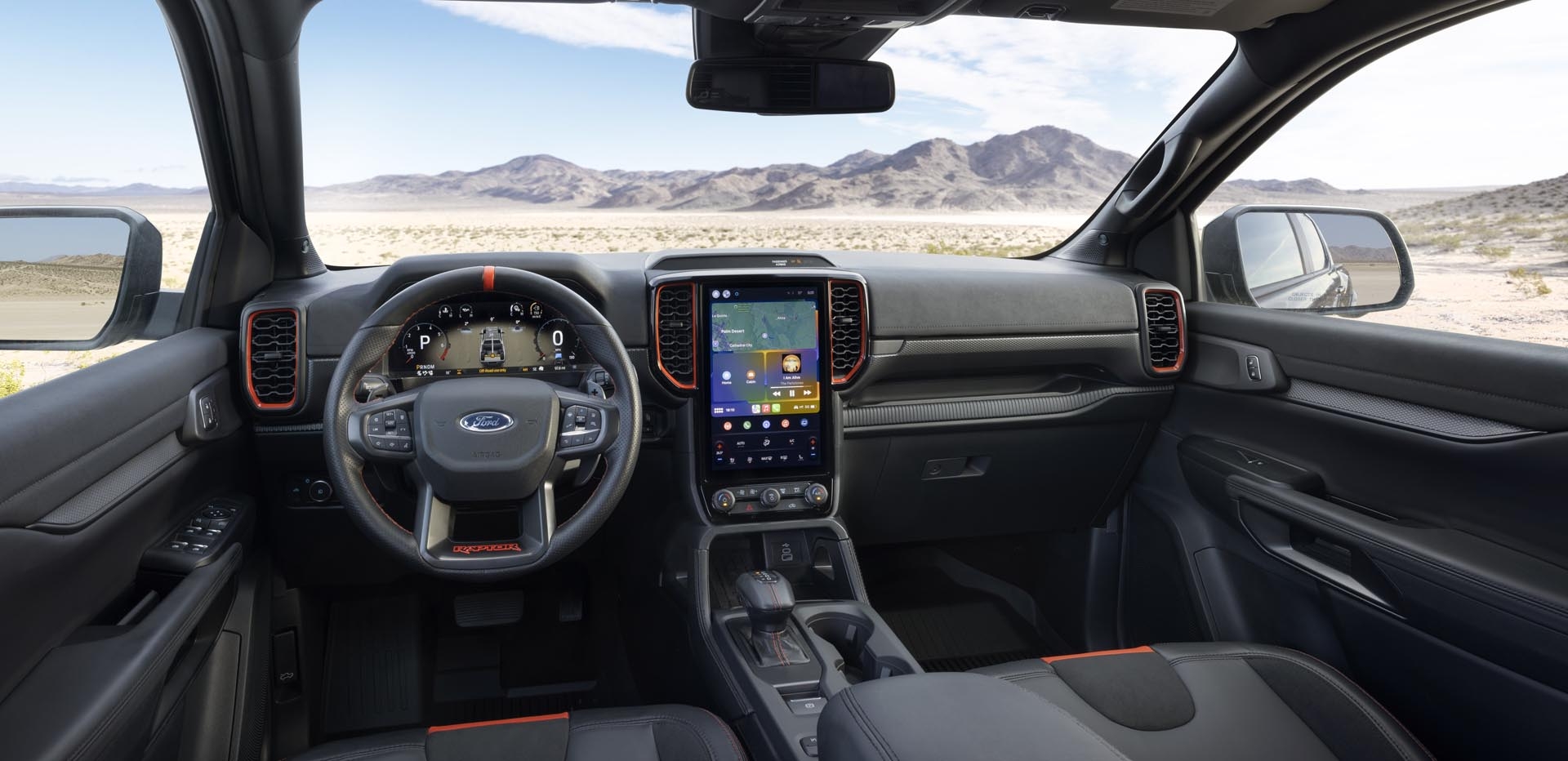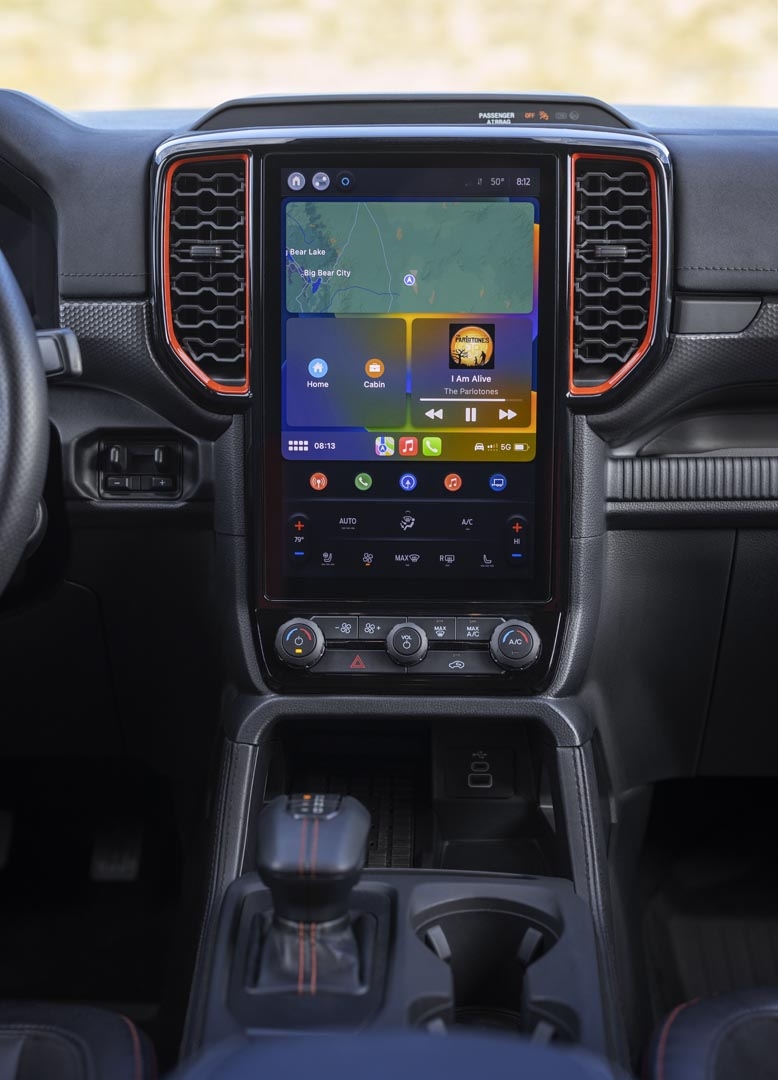
FORD Ranger 2025
Two additional cylinders that make a difference
Pros and cons
Pros
- Smooth and powerful V6 engine
- Transmission finally smooth
- Precise and well-weighted steering
- Stable ride
- Comfortable front seats
- Efficient controls and displays
Cons
- Suspension still firm
- No all-wheel-drive mode (except Raptor)
- Hard brake pedal
- Cheap finish
- Some equipment shortcomings
Overview
Five years after returning to Ford's North American lineup, the Ranger received a major redesign for 2024. This wasn't a bad thing, since the previous version had already been available since 2011 almost everywhere except Canada and the United States.
This fourth generation of the Ranger has retained several fundamentals of the previous model, including the ladder frame, turbocharged four-cylinder engine, 10-speed transmission, and overall body proportions. However, the manufacturer has lengthened the wheelbase, widened the cab, strengthened the frame, modified the drivetrains, and modernized the interior of its midsize pickup. It has also eliminated the extended cab, short rear doors, and long bed configuration, leaving a single body with four traditional doors and a 5-foot bed.
This update also marked the North American introduction of the Raptor version, which has been available elsewhere in the world since 2018. Priced at over $80,000, it is designed to excel off-road and uses the same 400-plus horsepower V6 as the Bronco Raptor and Explorer ST.
While making space under the hood of this latest generation, Ford wisely decided to also offer a six-cylinder engine in more affordable variants. Since last year, the same 2.7-liter EcoBoost engine found in the F-150 has been optional in the Ranger XLT and Lariat. It's worth noting that this is a standalone option, meaning it doesn't require the addition of expensive packages.
The return of a V6 also sets the Ranger apart from the Chevrolet Colorado, GMC Canyon and Toyota Tacoma, which all switched to a four-cylinder engine in their recent redesigns. Conversely, the Honda Ridgeline, Jeep Gladiator and Nissan Frontier continue their journey with V6s whose power is more in line with that of the Ford base engine.
Is it worth paying $2,250 for the Ranger's six-cylinder? How does this pickup compare to its rivals and its "big brother," the F-150? Check out the Review section for our experts' opinions, in five highlights.
Verdict
According to data compiled by Automédia magazine, Ranger sales increased by 76% in Quebec last year. No doubt the novelty factor contributed to this increase, but there's substance beneath the cosmetic update. The V6 engine delivers smoothness, ease of action and flexibility unmatched by the competition's four-cylinder engines. The handling is both smoother and more stable, while the interior is more welcoming than before.
While the Chevrolet Colorado/GMC Canyon duo and the Toyota Tacoma are well ahead of it in the sales charts, the Ranger is arguably a more compelling proposition for everyday driving. Only the Honda Ridgeline beats it in terms of comfort and soundproofing, thanks to a unibody structure that, however, penalizes the Ridgeline in terms of cargo and towing capacity.
The Ranger is definitely worth a look if you want the capabilities of a pickup truck while keeping an eye on your urban footprint. That said, the F-150's attractive promotions narrow the monthly payment gap so much that many people end up with the full-size model... without really needing it.
Evaluation
A V6 that stands out
The Ranger's standard turbocharged four-cylinder engine performs honorably, at least in terms of efficiency. More discreet than the similar engines in the Toyota Tacoma and the Chevrolet Colorado/GMC Canyon, it also avoids the annoying vibrations felt in the GM duo.
However, it yields to the smooth, linear, and lively character of the optional 2.7-liter V6. The latter deserves a checkmark on the order form if you're looking for an engine more refined than the category average. This is especially true since it works very well with the 10-speed transmission, which Ford has finally rid of the abruptness that characterized it for so long.
This powertrain doesn't increase towing capacity, but it will handle the task with greater ease than the base engine. Without a load, it even propels the truck to 100 km/h in under 8 seconds, with matching gusto on pick-up acceleration.
As a bonus, the V6 uses under 1L/100 km more fuel than the four-cylinder, according to Natural Resources Canada's combined city-highway rating. Still, don't expect miracles: for instance, we measured 13.9L/100 km after two weeks of winter testing. This is roughly equivalent to our results behind the wheel of the Ranger's rivals, regardless of their number of cylinders.
Stable but still firm
"Precise and well-weighted": these are unusual terms for a pickup truck's steering. Yet they accurately describe the Ranger's, at least in daily driving.
While it loses some sharpeness in tight corners, it certainly contributes to sure-footed handling on the highway, as do the wider track width (the space between the wheels on each axle), the longer wheelbase, and the rear axle's honest stability over potholes and expansion joints. Ford has clearly reworked the suspension, which bounced more easily in the previous generation.
We still found the damping too harsh over bumps in urban areas, at least with the Off-Road FX4 package on our tester. If you don't intend to take on forest roads, it's probably best to avoid this $950 option. However, you won't be able to escape the firmness of the brake pedal, which requires too much effort to access merely adequate power.
Will all-wheel drive finally come?
Unfortunately, no Ranger except the Raptor offers automatic 4x4 engagement. This means you have to shift into four-wheel drive on slippery roads and then switch back to rear-wheel drive when conditions improve to avoid damaging the components. In changing road conditions, this dilemma can lead to annoying wheel spin at certain intersections, or worse, the tail slipping sideways at cruising speeds.
In all fairness, most pickup truck drivers are used to this behavior. The Nissan Frontier and Toyota Tacoma are no better equipped than the Ranger in this regard. Still, we prefer the safety of an automatic system like the one that comes standard in the Colorado and Canyon.
A handy but plasticy cabin
Accessing the Ranger's cabin raises some questions. In a $59,000 vehicle, you still have to unlock the doors with the remote control AND start the engine by inserting the key in the ignition? Okay, fine. Now, where's the heated steering wheel button? Not on the steering wheel, nor among the physical climate controls—which Ford had the excellent idea of keeping under the touchscreen. So the function must be hidden in the screen, right? Tough luck: you have to pay for the Lariat trim to benefit from this now-common accessory.
It's also the one to choose to get some soft-touch materials on the doors and dashboard. The XL and XLT models surround you with a sea of hard plastic, broken only by the padding on the armrests and front seats. Fortunately, the latter offer a good blend of comfort and support, at least when they benefit from the extensive power adjustments included in the high-level XLT package. The rear seats are less welcoming due to the very upright backrest and limited legroom behind tall occupants.
On the other hand, the seat cushions lifts up to create a weather-protected cargo area, as in almost all pickup trucks. Adding to this convenience are good storage compartments up front and disarmingly simple primary controls, including a good old-fashioned shifter, a wiper stalk located to the right of the steering wheel, and logical, if sometimes slow, screens.
Stop looking for a bargain
It's impossible to talk about the Ranger without thinking of the one a former colleague acquired in 2010. It was a brand-new extended-cab model equipped with the most powerful engine at the time, a 207-hp 4.0-liter V6, which was paired with a manual transmission and rear-wheel drive. Conspicuous by their absence were any electric assistance, air conditioning, and even a tilt steering wheel!
Our test version is light years ahead of this "contractor's truck," as we liked to call it, in terms of comfort, performance, and safety. But all this comes at a price, since it retails for more than four times the approximately $13,500 paid by our partner at the time. Even an XL version without heated seats and blind-spot monitoring doesn't go for less than $44,000, and incentives are rare.
It's quite the opposite in the case of the F-150. With similar equipment, in April 2025, an XLT variant with a 2.7-liter engine cost only $75 more per month than our test Ranger for a four-year lease, taxes included. This probably explains why Ford sold 25 times more units of its flagship model than the Ranger in Quebec last year.
Safety features
- Antilock brakes with electronic brake-force distribution and brake assist
- Stability and traction control
- Front airbags
- Front side airbags
- Side curtain airbags
- Five head restraints (adjustable on outboard seats, foldable on centre seat)
- Backup camera
- Tire pressure monitoring system
- Forward collision warning
- Front automatic emergency braking with pedestrian detection
- Auto high beam
- Lane departure alert with automatic steering assist, active lane centering, blind-spot monitoring system, rear cross-traffic alert, rear parking sensors and rear automatic emergency braking (standard on XLT, Lariat and Raptor, not available on XL)
- Adaptive cruise control, front parking sensors and surround-view monitor (standard on Lariat and Raptor, included in the XLT Technology package, not available on XL)
Crash test results
National Highway Traffic Safety Administration
Overall score: 4/5
Frontal impact: 5/5
Side impact: 5/5
Rollover resistance: 3/5
Insurance Institute For Highway Safety
Moderate overlap frontal impact: Not tested
Small overlap frontal impact: Not tested
Side impact: Not tested
